Naomi Fraga, Ph.D.,
A few years ago, Naomi Fraga became Director of Conservation Programs at RSABG, tasked with formally bringing together their well established and diverse plant conservation projects under one umbrella. Having built her career to help conserve the plants she loves, she has thrived in the role, building upon the garden’s rich history of conservation work.
When did you first fall in love with plants?
I would like to think that I have always been in love with plants but I distinctly remember the time when my love became undeniable. I was an undergraduate at Cal Poly Pomona and was fortunate to find a volunteer opportunity in the herbarium at Rancho Santa Ana Botanic Garden (RSABG). My first job was to transcribe label information from specimens into a database. I learned so much about plants working in the collection; they became an inspiration to me and they are now the basis for my life’s work. After that volunteer opportunity, I never looked back. I was not only in love with plants but I was also committed to their conservation.
What was your path to becoming the Director of Conservation Programs?
Once I found the herbarium at RSABG, my path became pretty straight forward. As my love and appreciation for plants grew, I knew I wanted plant conservation to be at the center of my work. I thought in order to conserve plants, I ought to know them well, so I undertook a M.S. degree in Botany. My master’s work set me up to lead the field studies program at RSABG, implementing botanical surveys and rare plant studies. While working in the field studies program, I thought there was more I could do to contribute to plant conservation but I needed more tools in my toolkit. So, with my strong foundation in field botany, I returned to graduate school, this time to earn a Ph.D. in Botany studying systematics of a group of conservation concern, the monkeyflowers (family Phrymaceae).
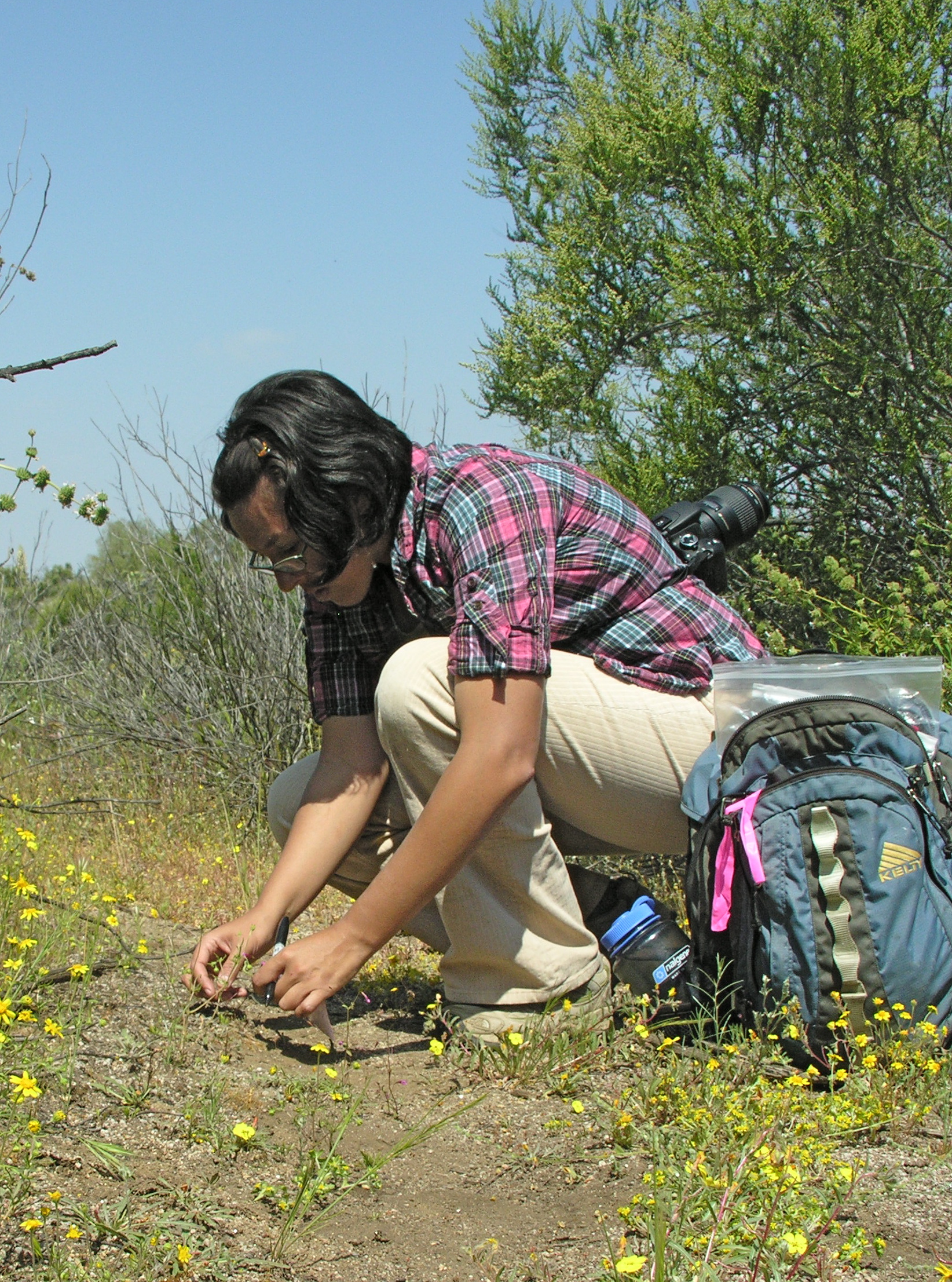
While I was working on my dissertation, I maintained my full-time position at RSABG. This was very challenging but also very rewarding because as I was growing as a scientist, our conservation program was growing as well. Upon my graduation in 2015, I was ready to move into my new role as Director of Conservation Programs. It was a new position at RSABG, so it allowed me the creativity to bring my vision of conservation of California native plants to the forefront. This was an opportunity for me to bring RSABG’s magnificent resources together in a unified fashion to enable and advance our work of conserving plants. I have been happy in this position ever since, and it is perfect for me.
What about working with plants has surprised you?
What surprises me the most about working with plants is that it is just as much about working with people as it is about working with plants. I oversee a diverse program that includes mentoring staff who are working in the fields of restoration, seed conservation, field botany, conservation genetics, and invasive plant management. The team I work with is incredibly talented and diverse in skills; and I feel fortunate that through them I get to work across these diverse disciplines within plant conservation. I also work in partnership with a diverse set of agencies and organizations to advance the science of plant conservation and to apply the principals of our work on-the-ground to make real tangible change. I enjoy working collaboratively, and if there is anything I have learned about plant conservation, it is that working together in a community (like CPC!) can have a huge effect for good. I have also found that public support and education are central to plant conservation. As such, a significant part of my work more recently has been centered on education and outreach to broader audiences. I hope through this work to guide more people to (re-)discover their love for plants just as I did when I was an undergraduate working in the herbarium.
What has been the most challenging aspect of your work?
By far the most challenging aspect of my work is deciding which projects to focus on and where to devote my time and energy. There is so much good work going on in California and a lot of opportunities to make positive change but we also face a lot of significant conservation challenges. I have learned that I cannot be in three places at one time (although I have tried!) and that prioritization is necessary because we all have limited time and resources.
Why do you believe good systematics research is important for conservation?
My training as a botanist and plant conservationist has been in plant systematics so I hope I do not seem too biased but I do believe that plant systematics is foundational to the science of conservation. Plant systematics is essentially biodiversity science; it enables us to carefully study, document, and increase knowledge about all the parts we are trying to conserve. The Endangered Species Act is a bedrock environmental law that relies on the understanding of diversity, namely species, as a unit of protection. Therefore the description and understanding of species diversity is central to our efforts to conserve them. In all of my diverse work as a conservation scientist, I find that I rely heavily on my training as systematist to inform conservation decisions. My training provides a key perspective on biodiversity that is not always well-represented in the multidisciplinary field of conservation.
What current projects or approaches in plant systematics excite you most?
There are so many exciting developments in the field of plant systematics – it is too difficult to pick just one area. Our ability to understand and document the tree of life will only grow as technology increases. From high through-put sequencing to the pace and scale at which we are able to digitize our collections; it seems like the possibilities are endless. However, as we try to construct the tree of life, there is one motivating factor that is always resident in my mind and it is that extinction is forever. To lose any segment of diversity on the tree of life, no matter how big or small, is tragic. This is what motivates me to increase our understanding of plant diversity on earth. To understand diversity is a mechanism to protect it: after all, we can’t protect what we do not know that exists. With those principles I hope we can empower the next generation of systematists to build on our knowledge of the green tree of life, as this will begin our path forward as we work to protect all life on our planet.
-
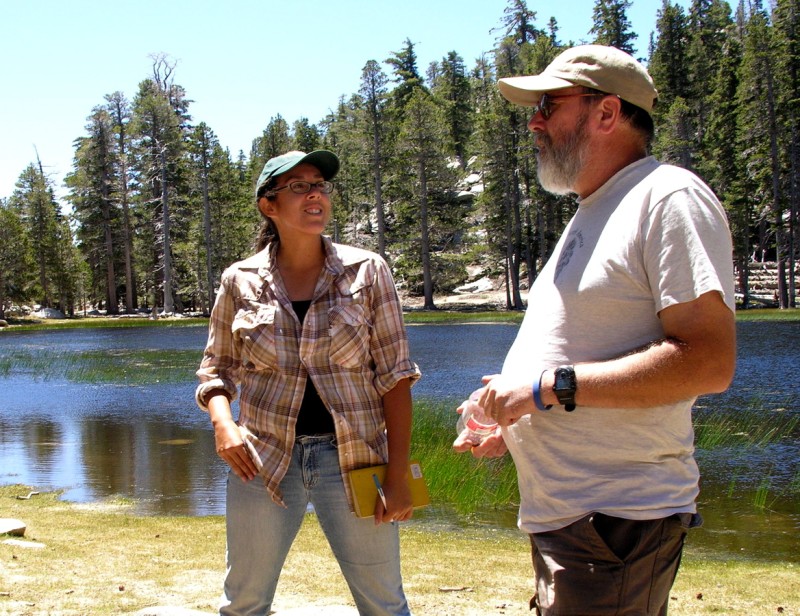
Naomi worked with her mentor Steve Boyd at Hidden Lake to conserve Hidden Lake blue curls – a taxa which was recently delisted. -
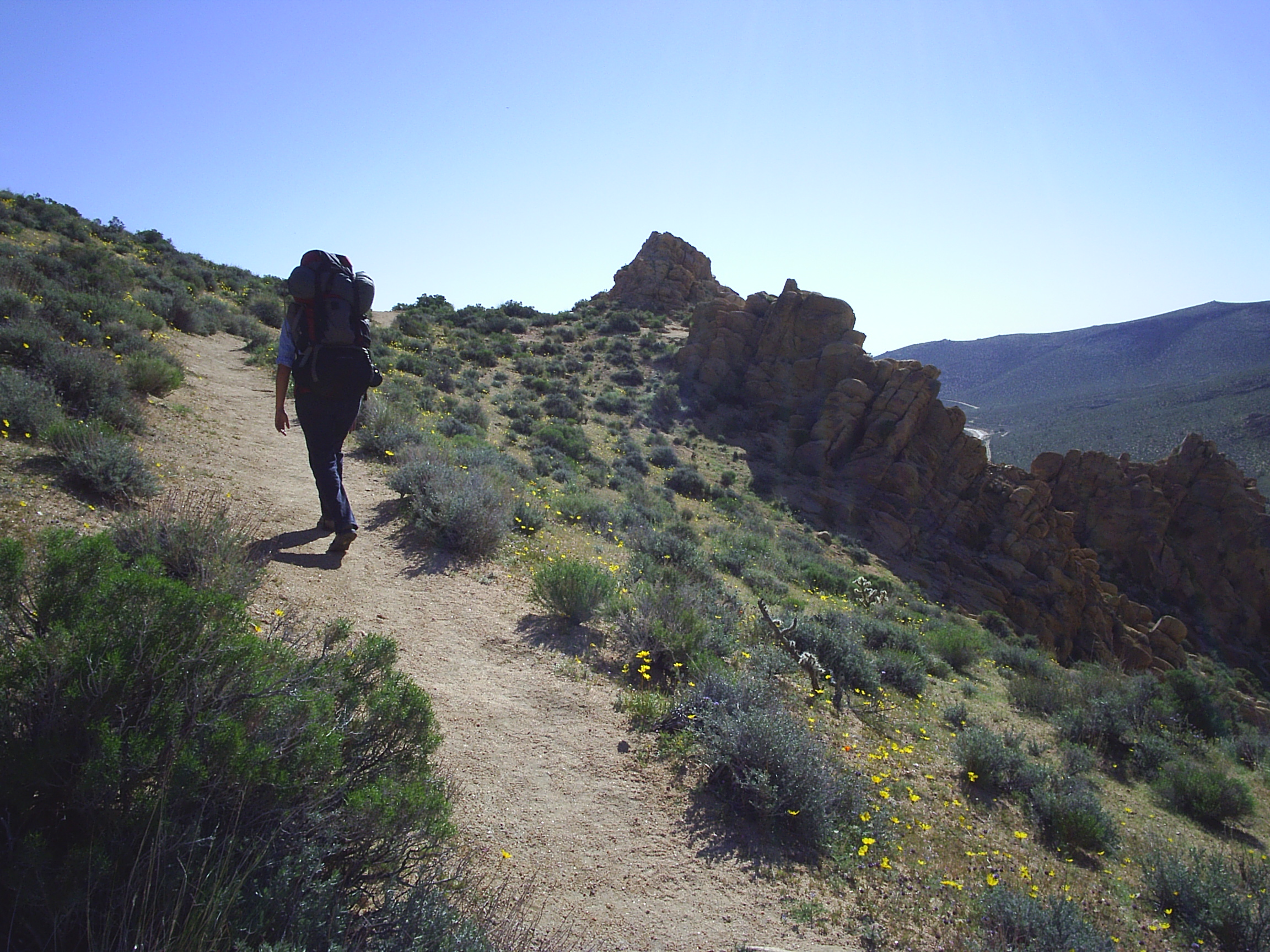
Naomi’s time in the field for her master’s project laid the foundation for her to lead the field studies program at RSABG, in which position she implemented botanical surveys and rare plant studies. -
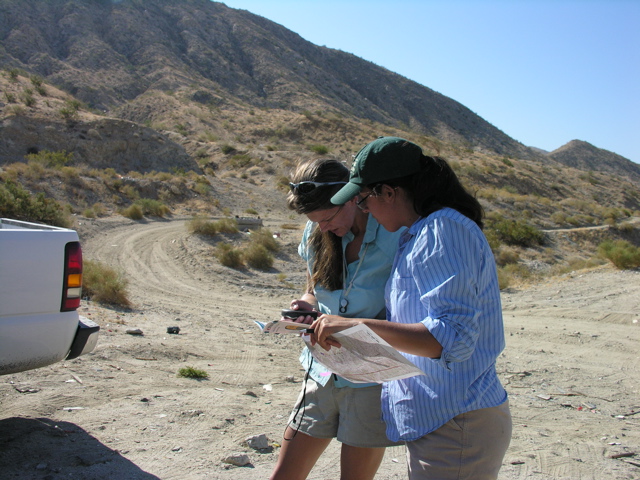
Long involved in CPC projects, Naomi conducted field surveys with Tasha LaDoux in Joshua Tree National Park in 2006 as part of a larger CPC-National Parks program.
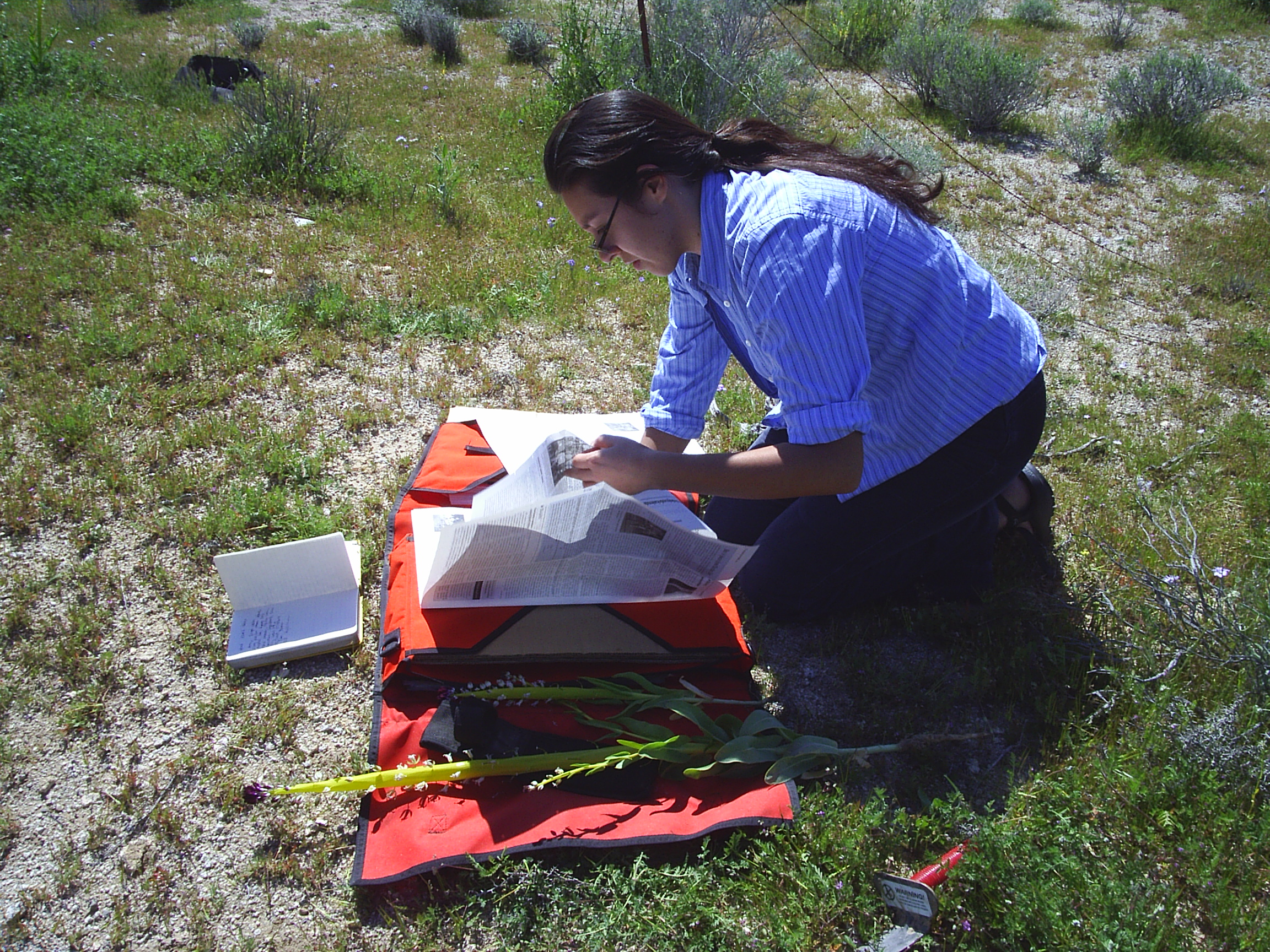
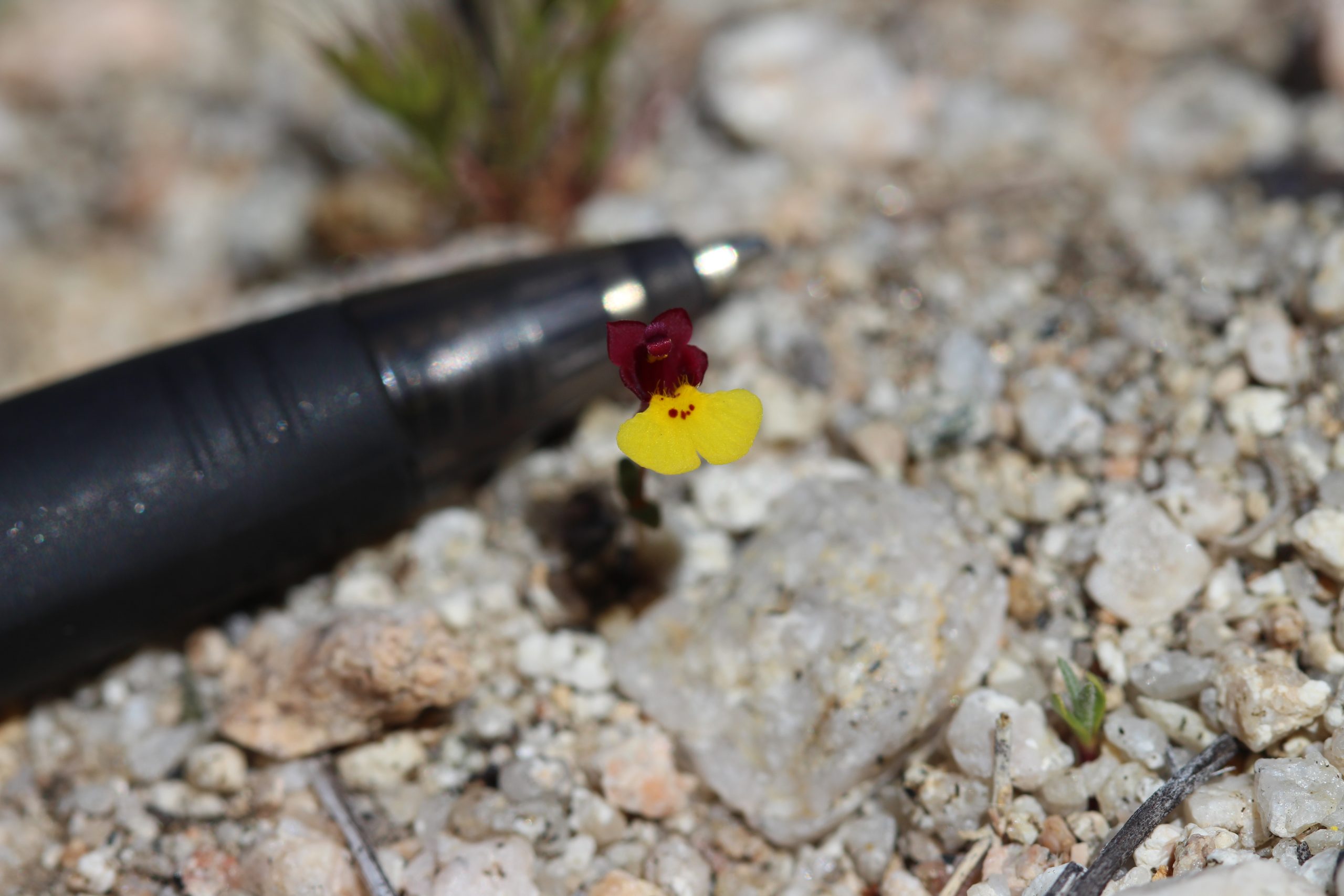
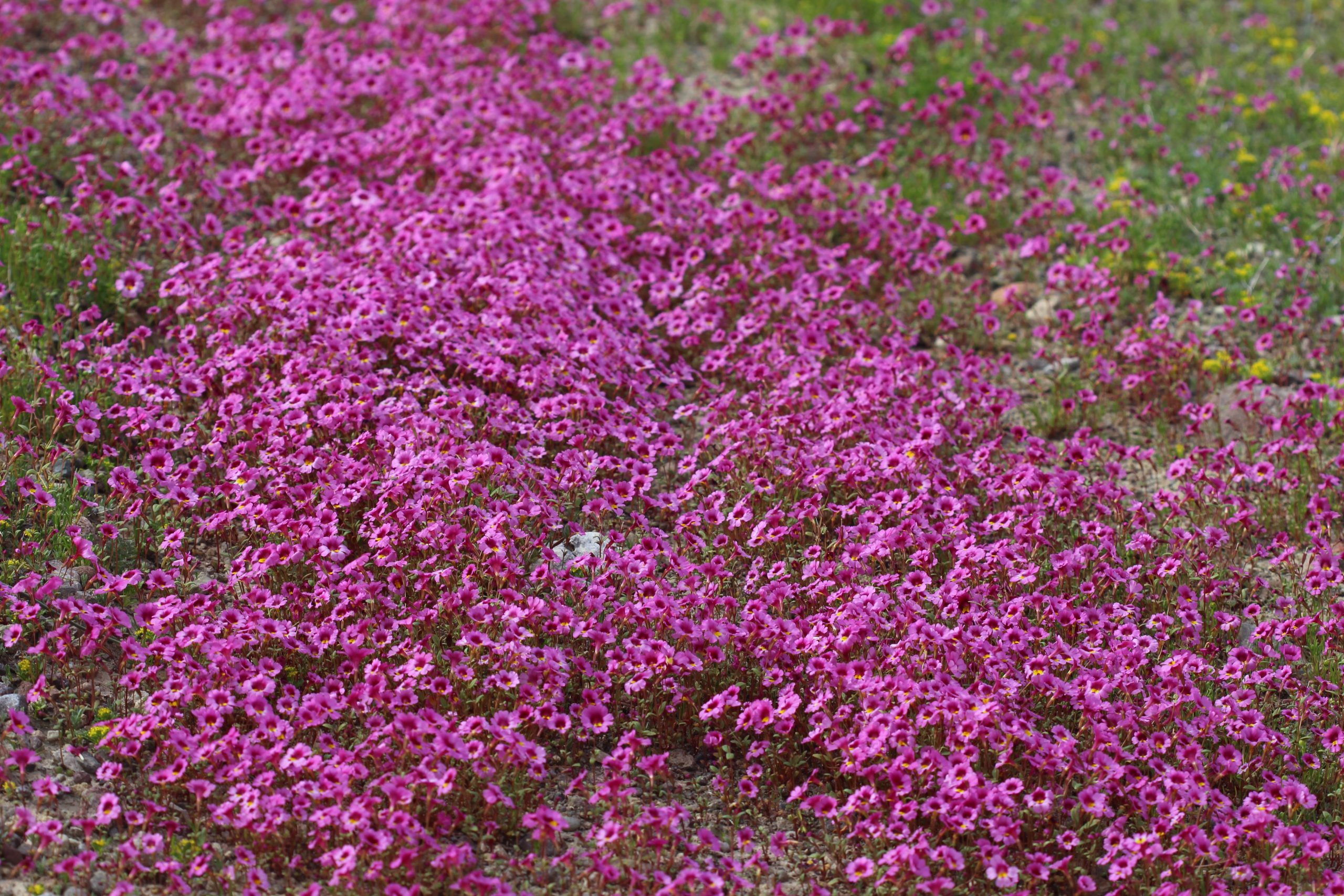

Photos Courtesy of Naomi Fraga, Rancho Santa Ana Botanic Garden.